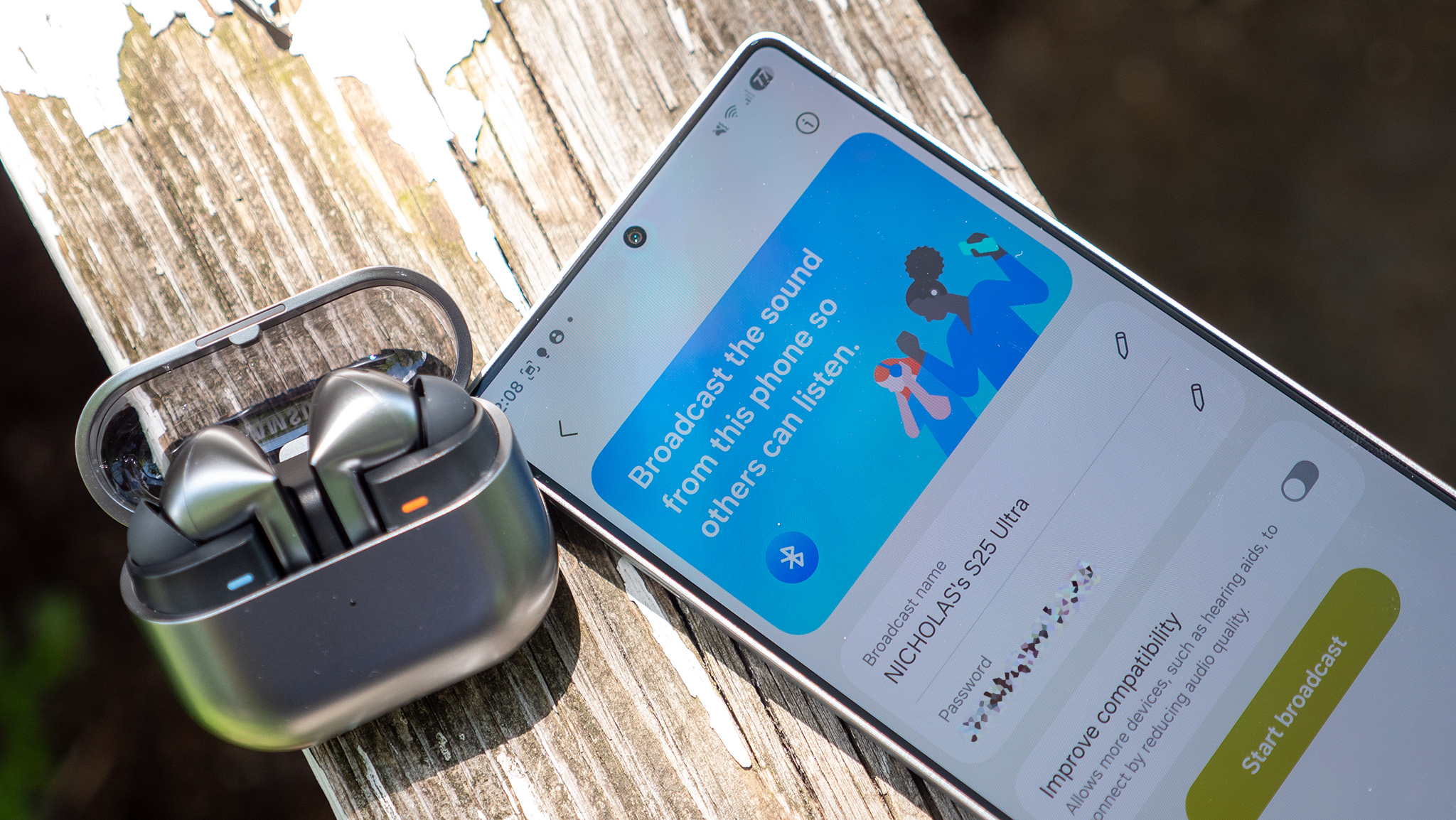Android Central Verdict
The V40 Pro is launching just six months after its predecessor, but it comes with considerable upgrades that allows it to stand out. The hardware is much more powerful this time around thanks to the Dimensity 9200+ platform, and the V40 Pro handles demanding games without breaking a sweat. The design is among the best in this category, and Vivo somehow managed to slot in a 5500mAh battery into a phone that's just 7.6mm thick. There's also IP68 ingress protection and stereo sound, but the biggest reason to buy the V40 Pro is the cameras — all three 50MP cameras at the back take outstanding photos, and the phone is at its best when shooting portrait imagery. It costs a lot more than the V30 Pro, but the upgrades ultimately make a huge difference.
Pros
- +
Ultra-thin design
- +
Vibrant AMOLED panel
- +
Much better hardware
- +
Incredible cameras
- +
Better battery life and 80W charging
- +
IP68 ingress protection
- +
Stereo sound (finally)
Cons
- -
Significantly costlier than V30 Pro
- -
Won't get as many software updates as rivals
Why you can trust Android Central
Vivo tends to launch a lot of phones over the course of a year, and its mid-range V series in particular sees a new model every six months. The breakneck launch strategy means there isn't much in the way of differentiation between generations, with Vivo instead offering one new feature to justify launching new devices.
That changed at the start of 2024, with the V30 Pro coming with sizeable upgrades, including Zeiss tuning and 50MP auxiliary cameras. With the V40 Pro, Vivo is touting portrait shots as the marquee addition, but it's also offering much better hardware with the Dimensity 9200+, and even better cameras. Just like the X100 Pro, the V40 Pro's 50MP zoom lens doubles as a portrait shooter, and it manages to deliver truly outstanding photos.
There's also a larger 5500mAh battery, but the phone itself isn't any thicker than its predecessor, and that's an achievement in and of itself. Although the V40 Pro is launching just six months after its predecessor, the sheer number of new features makes it one of the most exciting devices in this segment.
Vivo V40 Pro: Pricing and availability
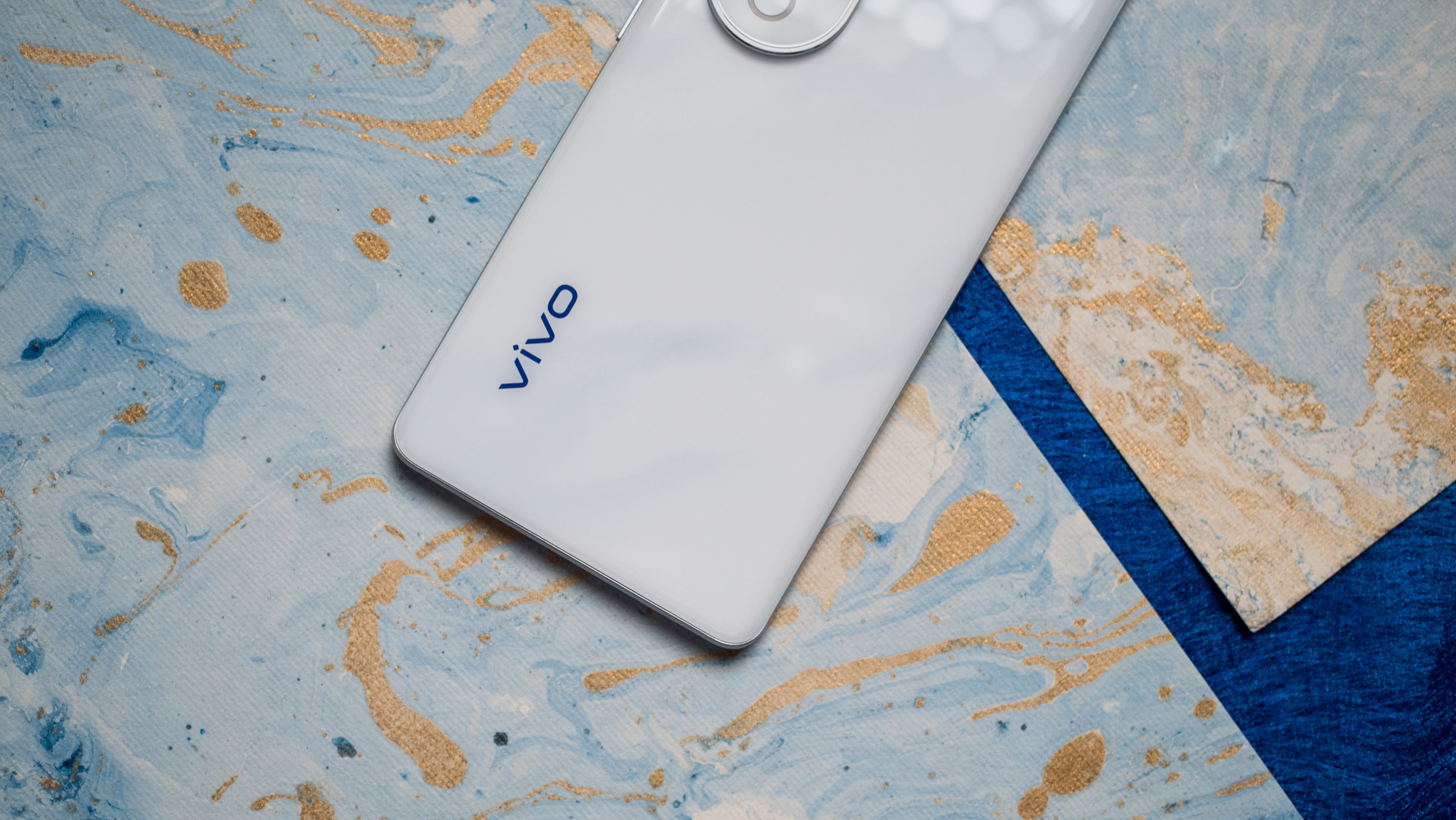
Vivo unveiled the V40 and V40 Pro at a launch event in India on August 7, and the phones are going on sale in the country later in the month. The V40 Pro is available in 8GB/256GB, 12GB/256GB, and 12GB/512GB editions, while the standard V40 is sold in 8GB/128GB, 8GB/256GB, and 12GB/256GB models.
The key difference between the standard V40 and the V40 Pro is that the latter gets a 50MP telephoto lens at the back. The Pro model is more powerful thanks to the MediaTek Dimensity 9200+, with the standard version offering the Snapdragon 7 Gen 3. Outside of that, both phones share the same 120Hz AMOLED panels, same design, same 5500mAh battery with 80W charging tech, and same software.
In India, the V40 Pro costs ₹49,999 ($595) for the version with 8GB of RAM and 256GB of storage, and the 12GB/512GB model costs ₹55,999 ($667). That's a heady increase over the V30 Pro, which is available for ₹41,999 ($500) for the 8GB/256GB model and ₹46,999 ($560) for the 12GB/512GB edition.
The regular V40 starts at ₹34,999 ($417) for the 8GB/128GB model, going up to ₹36,999 ($440) for the 8GB/256GB edition and ₹41,999 ($500) for the 12GB/512GB version.
Get the latest news from Android Central, your trusted companion in the world of Android
Vivo V40 Pro: Design
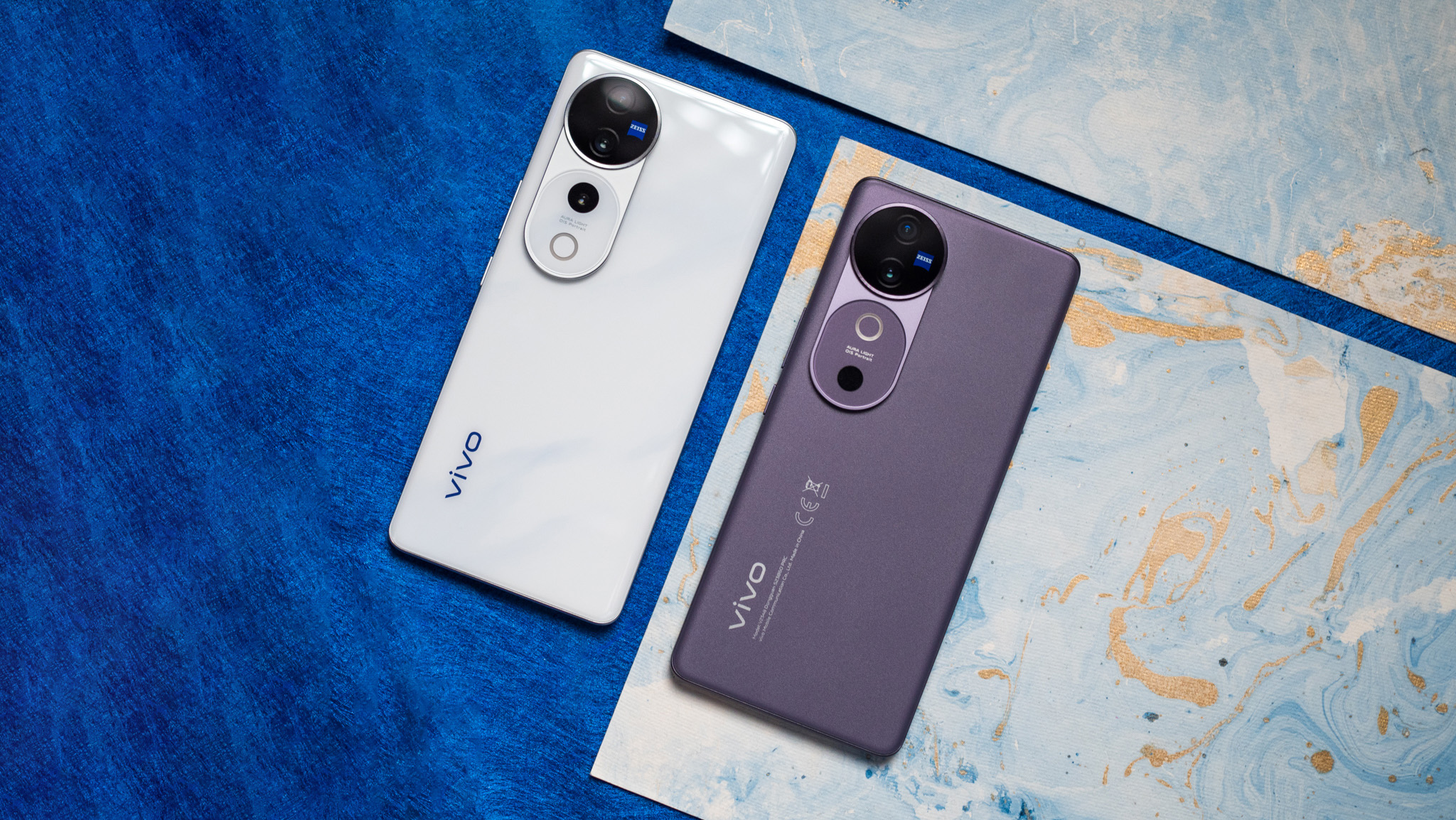
Vivo tends to deliver interesting designs with its V series phones, and that's no different with the V40 Pro. The phone shares similar dimensions as its predecessor, and the symmetric curves at the front and back ensure you can easily hold and use the device. The V40 Pro is one of the thinnest phones around, but there's adequate thickness around the mid-frame that it isn't awkward to use the phone in the least.

A sizeable change this generation is the camera housing; the module is getting massive with every new release, and the way it is going, by the time the V60 series rolls out by this time next year, the cameras will cover the entire back. Anyway, Vivo says the Gemini Ring camera island accentuates the overall design, and while it looks a little oversized, it isn't ungainly.

As always, Vivo has interesting color choices of the V40 and V40 Pro. The Nebula Purple, Sunglow Peach, and Meteor Blue variants come with a textured back, and the Moonlight White version that I'm using has a glossy coat. The white hue has subtle hints of blue, and Vivo says the design is meant to evoke images of "pristine moonlight reflecting off a tranquil lake," and while the color looks elegant, what I actually like is the anti-fingerprint coating that does a good job minimizing smudges.
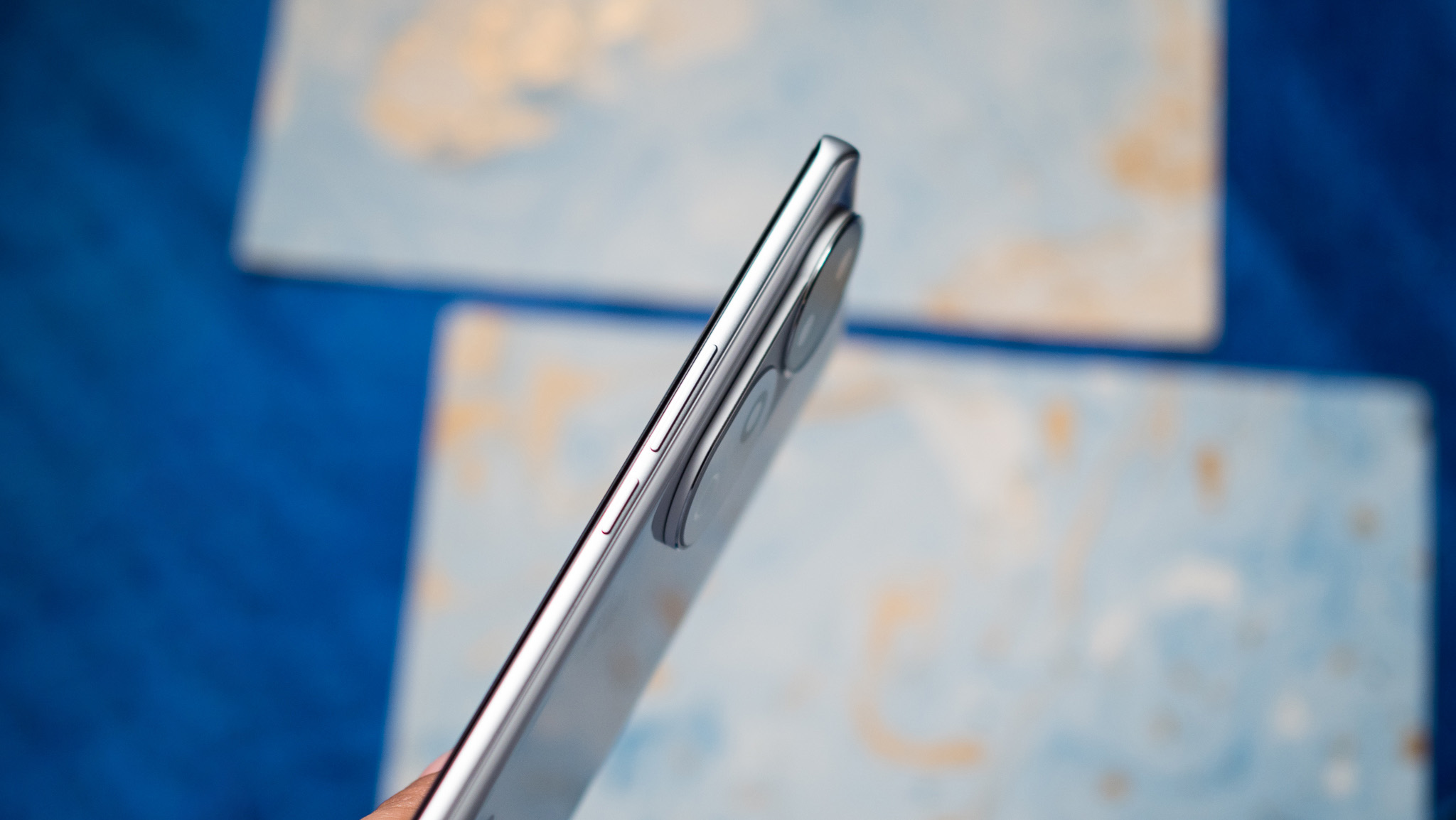

Coming in at 7.58mm, the V40 Pro has the distinction of being the thinnest phone with a 5500mAh battery. I still don't understand why brands chase these meaningless figures, as a thinner device doesn't really offer any material benefits in daily use. If anything, increased thickness makes holding a device easier. That said, Vivo did a good job balancing the design, and I have to admit that the V40 Pro looks a lot sleeker than its predecessor.
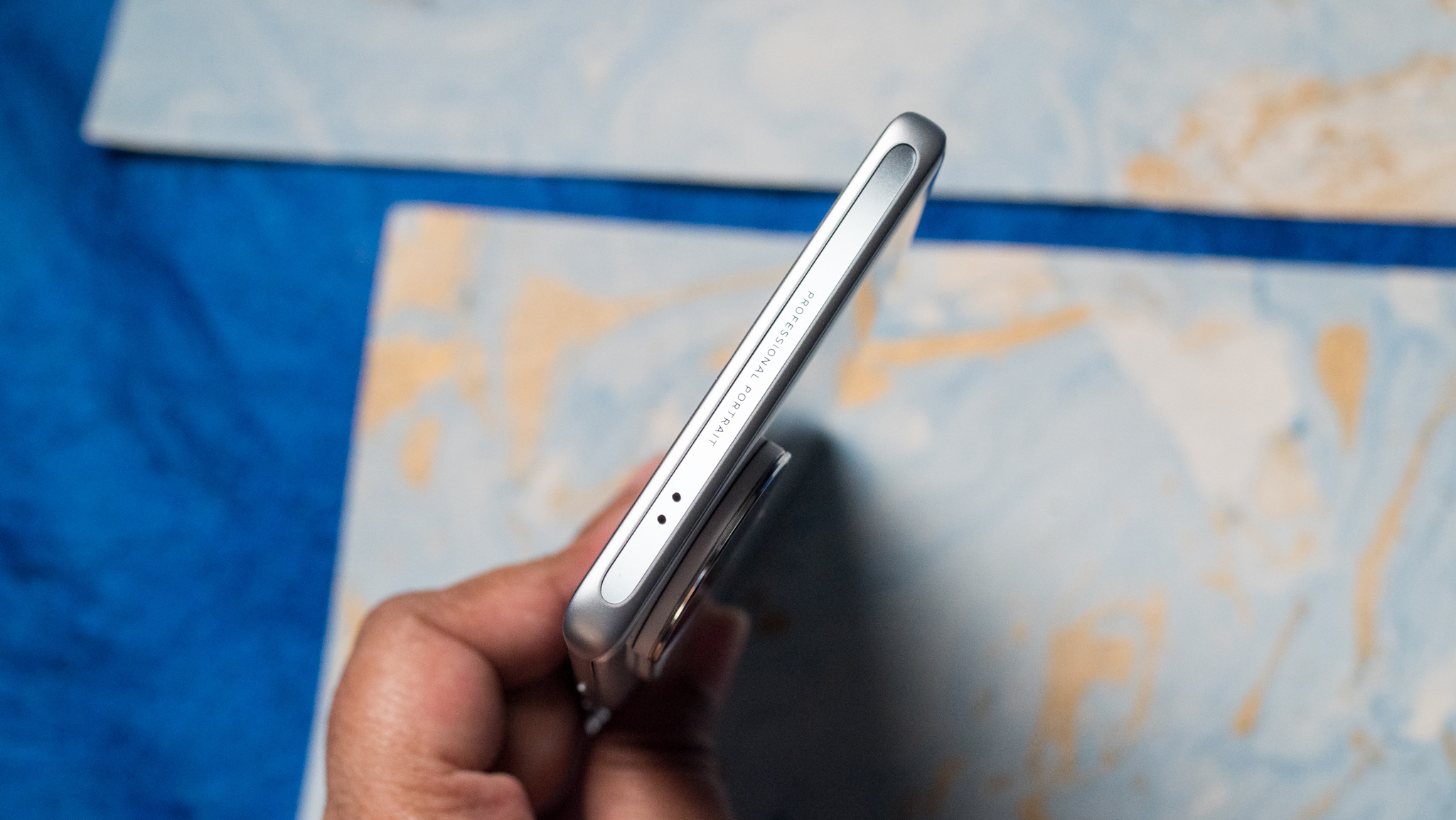
You'll still need to invest in a case to safeguard the device, but in the two weeks I used the V40 Pro, I didn't notice any issues with build quality; the phone took a few tumbles and came away unscathed. Vivo says it reinforced the chassis to be able to withstand tumbles, and that is indeed the case in daily use.
Another welcome change is the addition of IP68 ingress protection, giving the V40 Pro much better resistance to the elements. While the V40 Pro doesn't bring many groundbreaking new features, there are lots of smaller tweaks that ultimately make it a much better device.
Vivo V40 Pro: Display

Vivo hasn't changed the dimensions of the panel on the V40 Pro, so you get the same 6.78-inch AMOLED screen with a resolution of 2800 x 1260 and 120Hz refresh. What's different this time is that the panel gets noticeably brighter, going up to 4500 nits in HDR content. Of course, there isn't that big a change in daily use, and while the V40 Pro gets brighter outdoors, it's only evident when using it next to the V30 Pro.
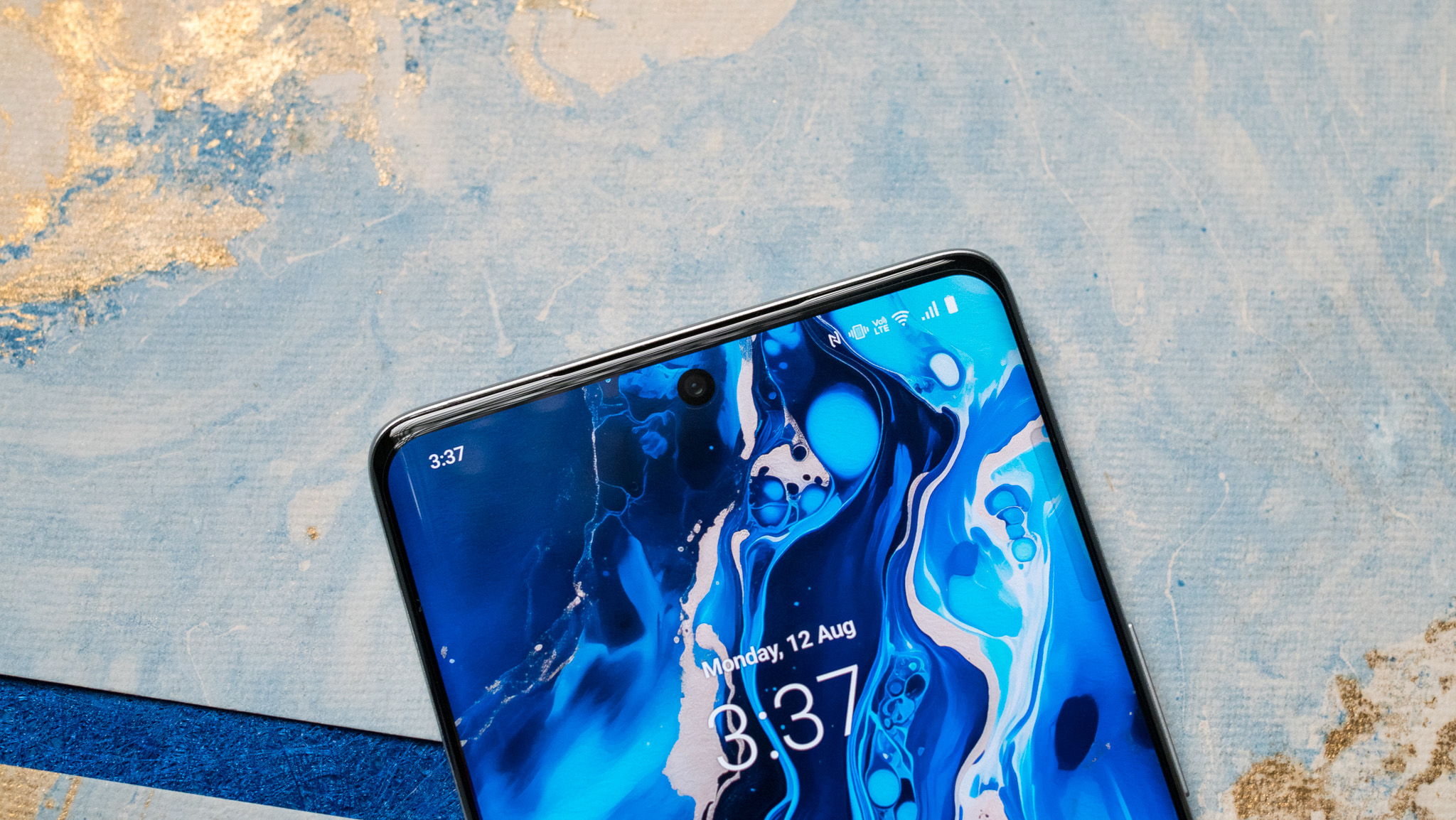
What you'll actually end up noticing is the presence of stereo speakers; Vivo was obstinate in using a single driver on its mid-range phones up to this point, but thankfully, the V40 Pro gets stereo sound, and that immediately makes a difference. The color fidelity is just as good as the V30 Pro, and you get vibrant colors and excellent contrast — I didn't see any issues in regular use.
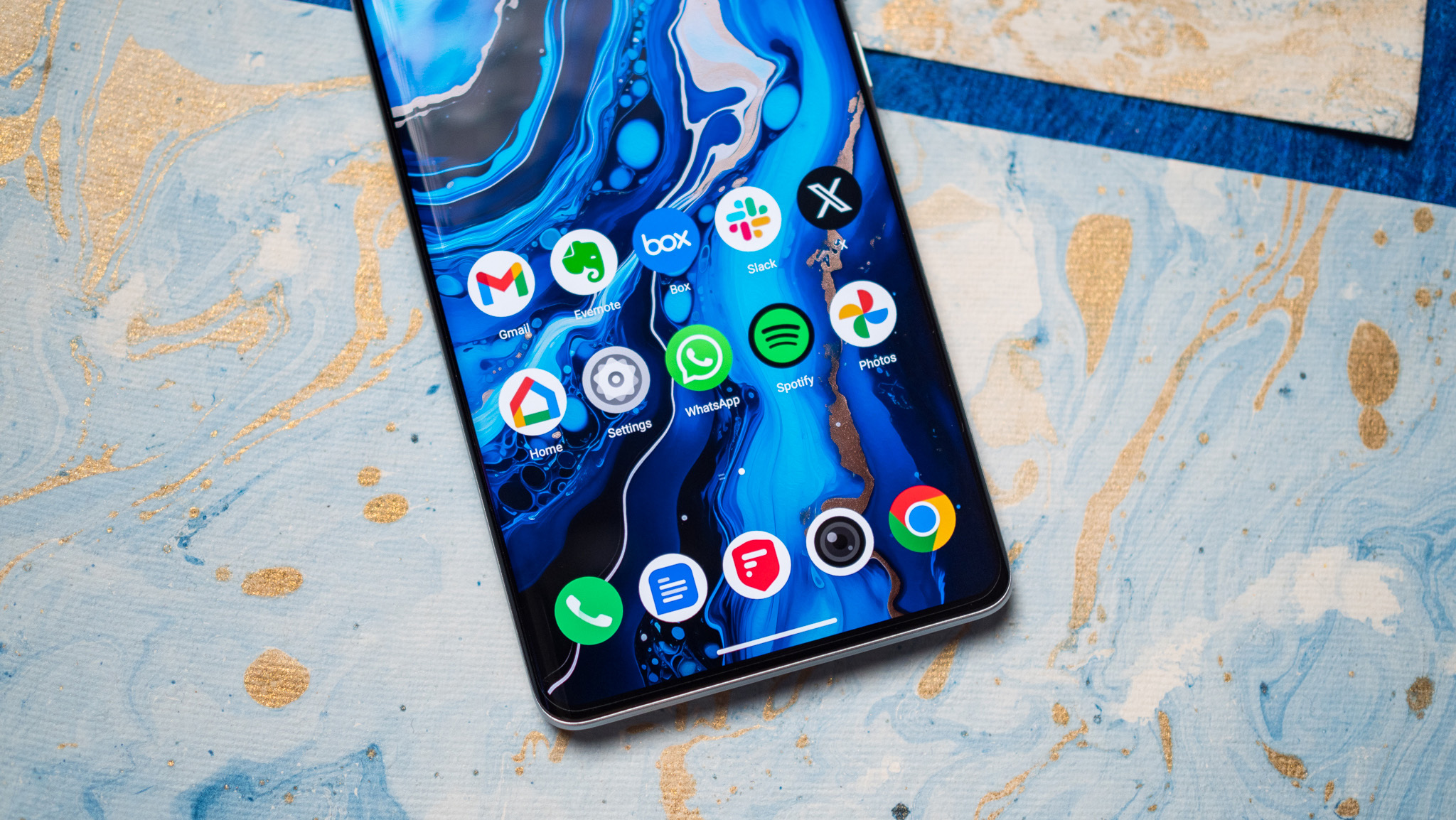
There's a decent amount of customizability as well, and the only quibble I have with the panel is that the in-screen reader sits too low; this is a routine enough occurrence on Vivo phones these days, and it makes using the device more awkward than necessary. Other than that though, Vivo got everything right; the addition of stereo sound and tweaks to the brightness levels makes the V40 Pro one of the best devices in this regard.
Vivo V40 Pro: Performance and battery
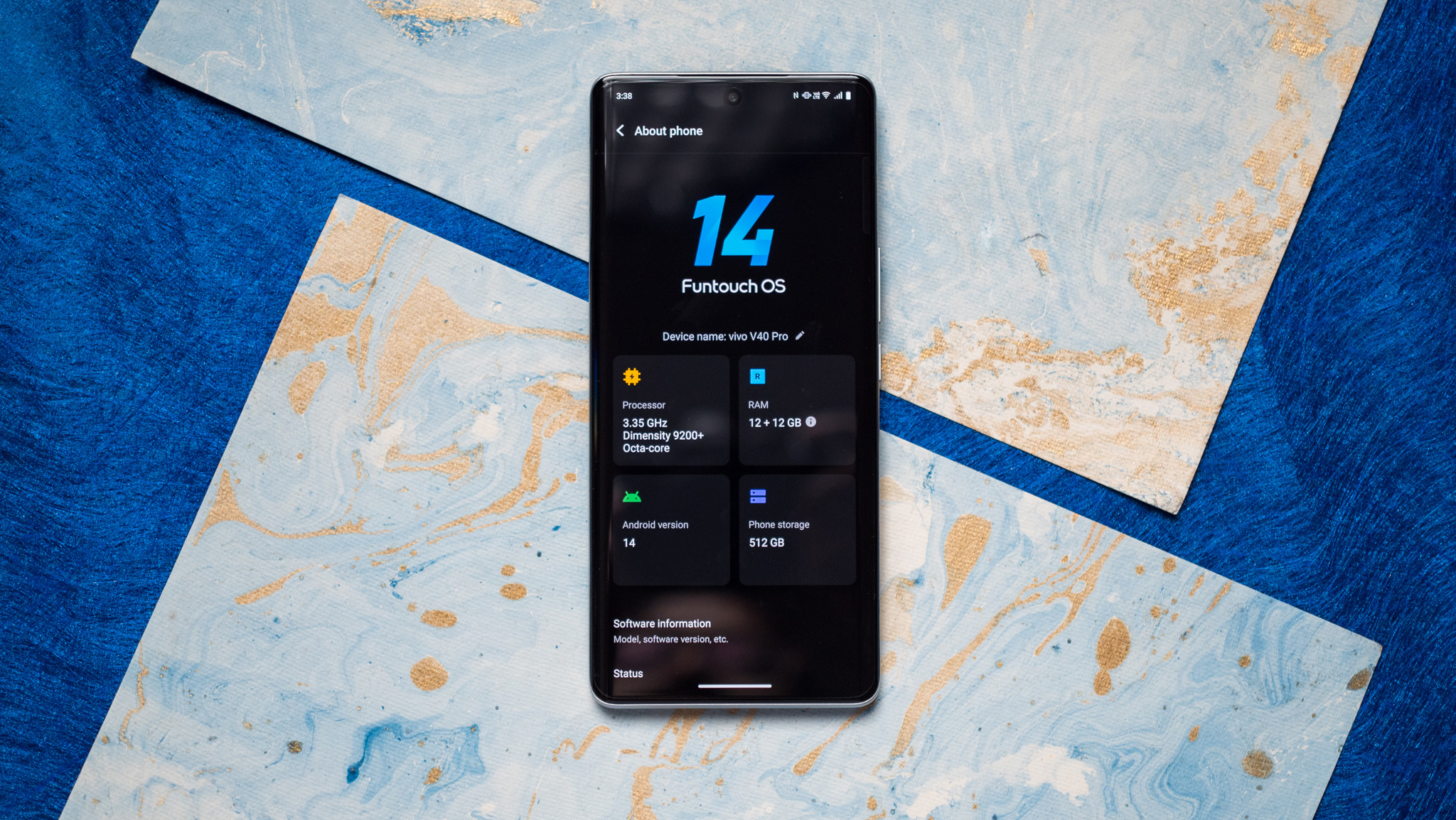
Vivo's V series devices aren't necessarily known for their hardware, and while the V30 Pro was decent enough in daily use, its shortcomings were evident while gaming. Thankfully, Vivo is rectifying the issue with the V40 Pro; the phone is powered by the Dimensity 9200+ platform, and it is incredible. It switches to Arm's v9 cores, including a Cortex X3 at 3.35GHz, three Cortex A715 cores at 3.0GHz, and the usual cluster of four A520 cores clocked at 2.0GHz.
The result is that the V40 Pro delivers significantly better performance than any other V series device to date. The phone does a terrific job in demanding games thanks to the 11-core Immortalis-G715, and even during extended gaming sessions, I didn't see much in the way of jitter. If anything, the V40 Pro has one of the best hardware packages in this category, and Vivo pulled quite the turnaround in this area.
| Category | Vivo V40 | Vivo V40 Pro | Vivo V30 Pro |
|---|---|---|---|
| PCMark Work 3.0 (Overall) | 11202 | 12252 | 10789 |
| PCMark Work 3.0 (Web Browsing) | 8770 | 10796 | 8503 |
| PCMark Work 3.0 (Video Editing) | 5977 | 5046 | 5162 |
| PCMark Work 3.0 (Writing) | 13199 | 22088 | 15764 |
| PCMark Work 3.0 (Photo Editing) | 25076 | 18835 | 24586 |
| Geekbench 6 (single-core) | 1163 | 1819 | 1259 |
| Geekbench 6 (multi-core) | 3230 | 5196 | 3832 |
| 3DMark Wild Life Extreme (score) | 1488 | 3907 | 1818 |
| 3DMark Wild Life Extreme (FPS) | 8.91 | 23.395 | 10.865 |
I'm using the 12GB/512GB version of the phone, and while Vivo uses UFS 3.1 storage modules, I didn't see any issues in multitasking or shooting 4K video. The vibration motor is great in its own right, and it has granular feedback. There are no problems with connectivity either; the V40 Pro has a Wi-Fi 7 modem, Bluetooth 5.3, and the usual AptX HD suite of codecs.
Battery is another area where the V40 Pro has a sizeable advantage over its predecessor. The 5500mAh battery manages to last over a day without breaking a sweat, and even with heavy use, I got a day and a half between charges. And when you need to plug it in, the 80W charging tech takes just over 45 minutes to charge the battery.
Thanks to the latest Dimensity platform and bigger battery, the V40 Pro easily outshines the V30 Pro and most other mid-range phones, and if you've wanted a Vivo mid-ranger that takes great photos and is also good at gaming, this is the obvious choice.
Vivo V40 Pro: Cameras
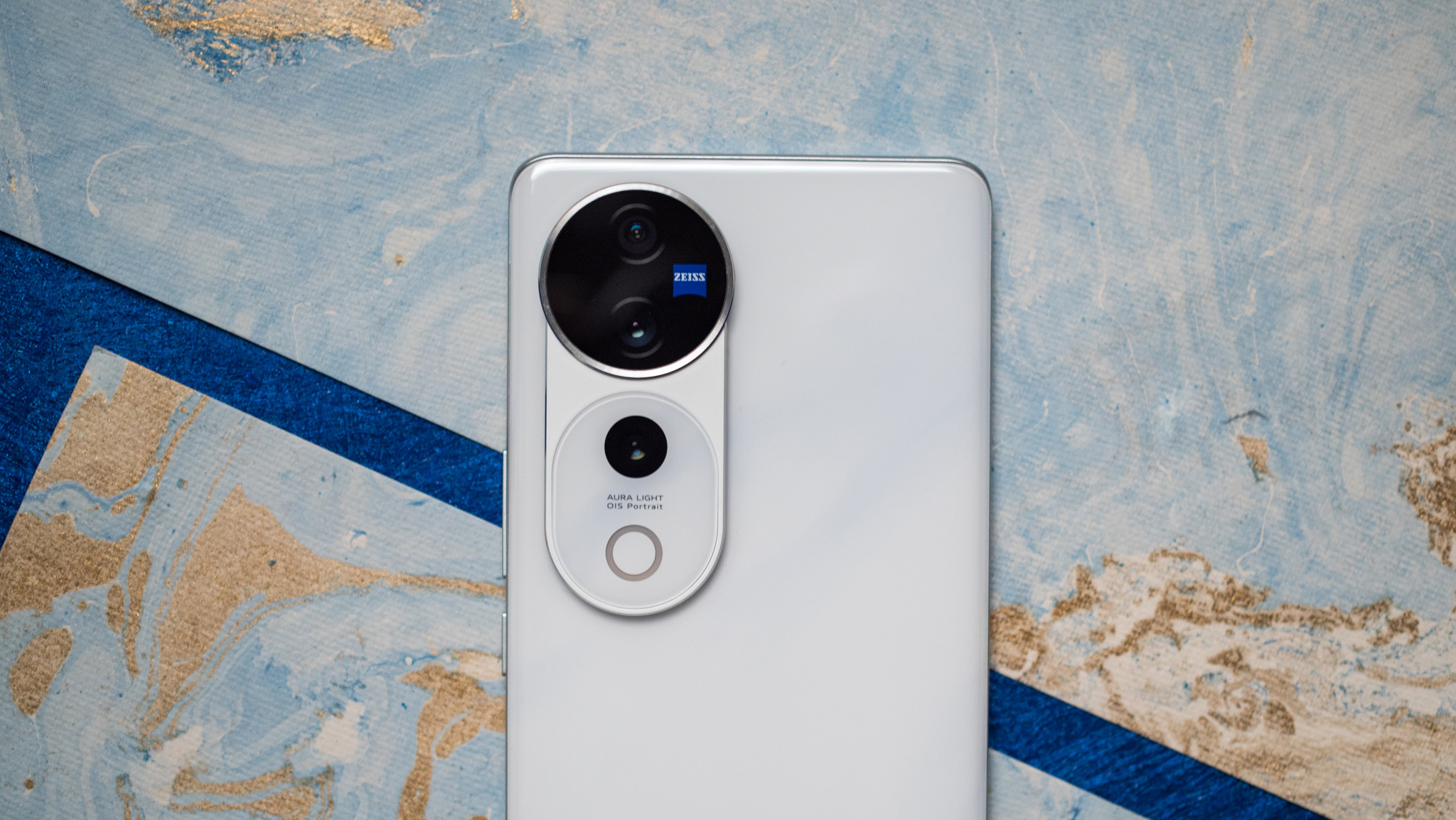
Vivo regularly rolls out updated cameras on its V series devices, and the V40 Pro is its strongest showing yet. The phone comes with a quartet of 50MP cameras; there's a 50MP Sony IMX921 main camera with OIS that's joined by a 50MP Samsung ISOCELL JN1 wide-angle lens and a 50MP Sony IMX816 telephoto that also has OIS. There's another 50MP ISOCELL JN1 module at the front, and it has a wide angle of view.
Now, if those sensors look familiar, it's because they're unchanged from the Zeiss-tuned V30 Pro. The IMX921 is an update to the IMX920, but other than that, the wide-angle, zoom, and selfie lenses on the V40 Pro are the same as its predecessor, with the key difference being the addition of OIS on the telephoto.
However, Vivo made tweaks to its camera tuning algorithms, and the V40 Pro is able to deliver better photos in all scenarios. What I like the most is that the zoom lens doubles as a portrait shooter; I used this to great effect on the X100 Pro and the X100 Ultra, and it's exciting to be able to do the same on a mid-range phone.







Just like the V30 Pro, the V40 Pro manages to take outstanding photos in daylight scenarios, delivering shots with great color rendition and white balance. There are no issues with foliage rendition or contrast levels, and the wide-angle lens also does just as good a job.
Similarly, the phone takes detailed shots in challenging situations, and there isn't visible noise — even with the wide-angle or zoom lenses. That's a big deal on a mid-range phone; while most devices in this segment have a great primary lens, the auxiliary cameras are an afterthought, and that's thankfully not the case on the V40 Pro.
Another thing the phone gets right is portrait shots; you can choose the focal length and bokeh, and the V40 Pro takes the best portrait shots of any mid-range device. I took hundreds of portrait shots with the X100 Ultra, and while the V40 Pro didn't quite manage to deliver the same caliber of photos, it came close — and that's no small feat.
Vivo made heady gains in the imaging side of things this year, and while the X100 Ultra is the best all-round camera I've used in 2024, the V40 Pro has a clear edge over other mid-range phones.
Vivo V40 Pro: Software
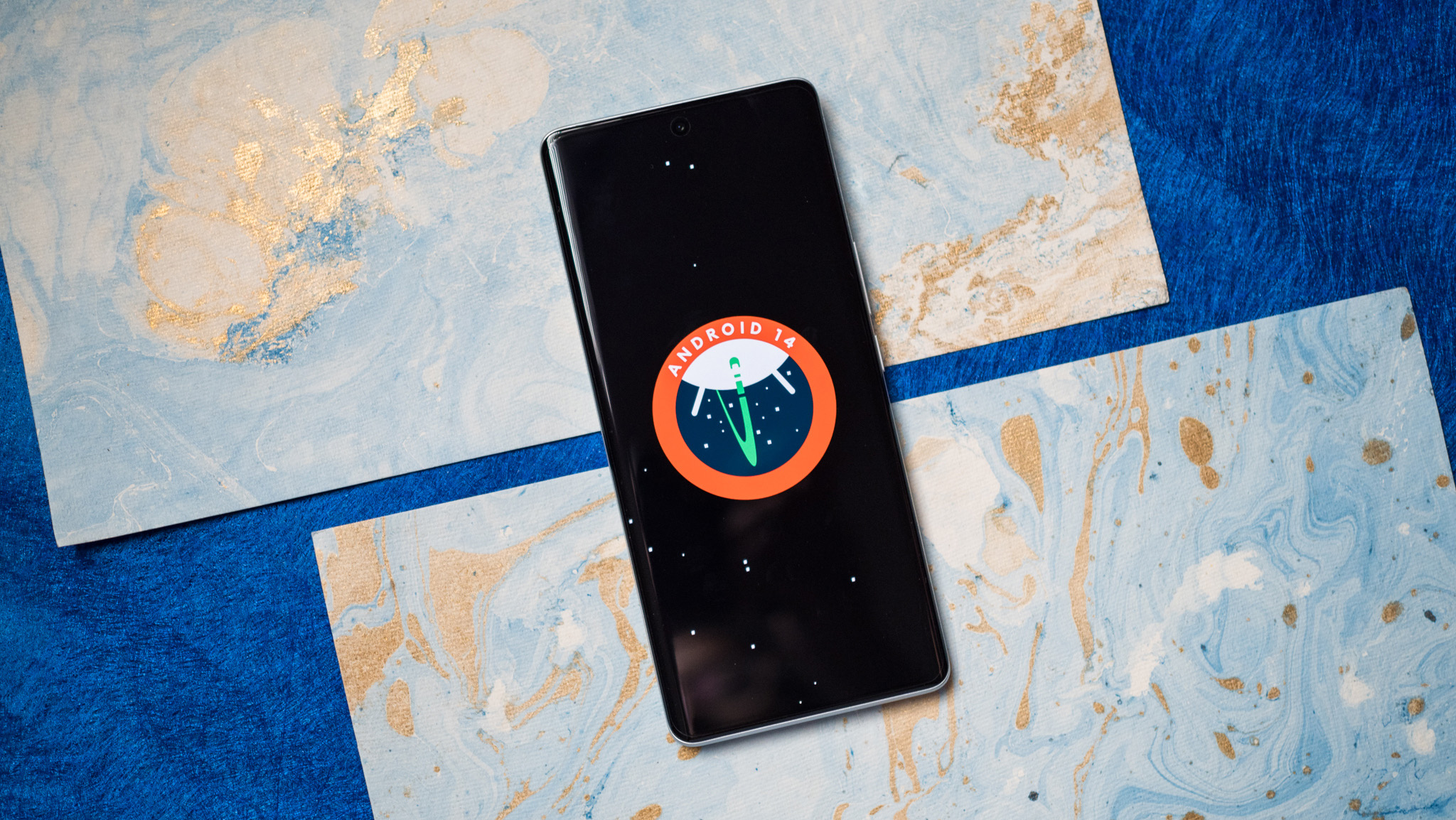
There isn't much to talk about on the software front, with the V40 Pro offering the same Funtouch OS 14 interface as its predecessor. The UI is based on Android 14, and while there is overt customization, it looks cohesive, and it is similar to ColorOS. Vivo has a set of custom features that are exclusive to its phones, and these include gestures, Jovi Home, and unique always-on styles.

The interface itself is fluid, and there is a decent amount of customizability on offer. There are no issues with notifications, and while the memory management is aggressive at times, it isn't anywhere as bothersome as Xiaomi's software.
Other than that, the only point of contention with Vivo's software efforts is that the V40 Pro will get just three platform updates. Most phones in this segment now get four updates as standard, so Vivo is on the backfoot in this regard. Then there's the question of when these updates will be available to the device — Vivo needs to roll out timely updates to its mid-range phones as well.
Vivo V40 Pro: The competition
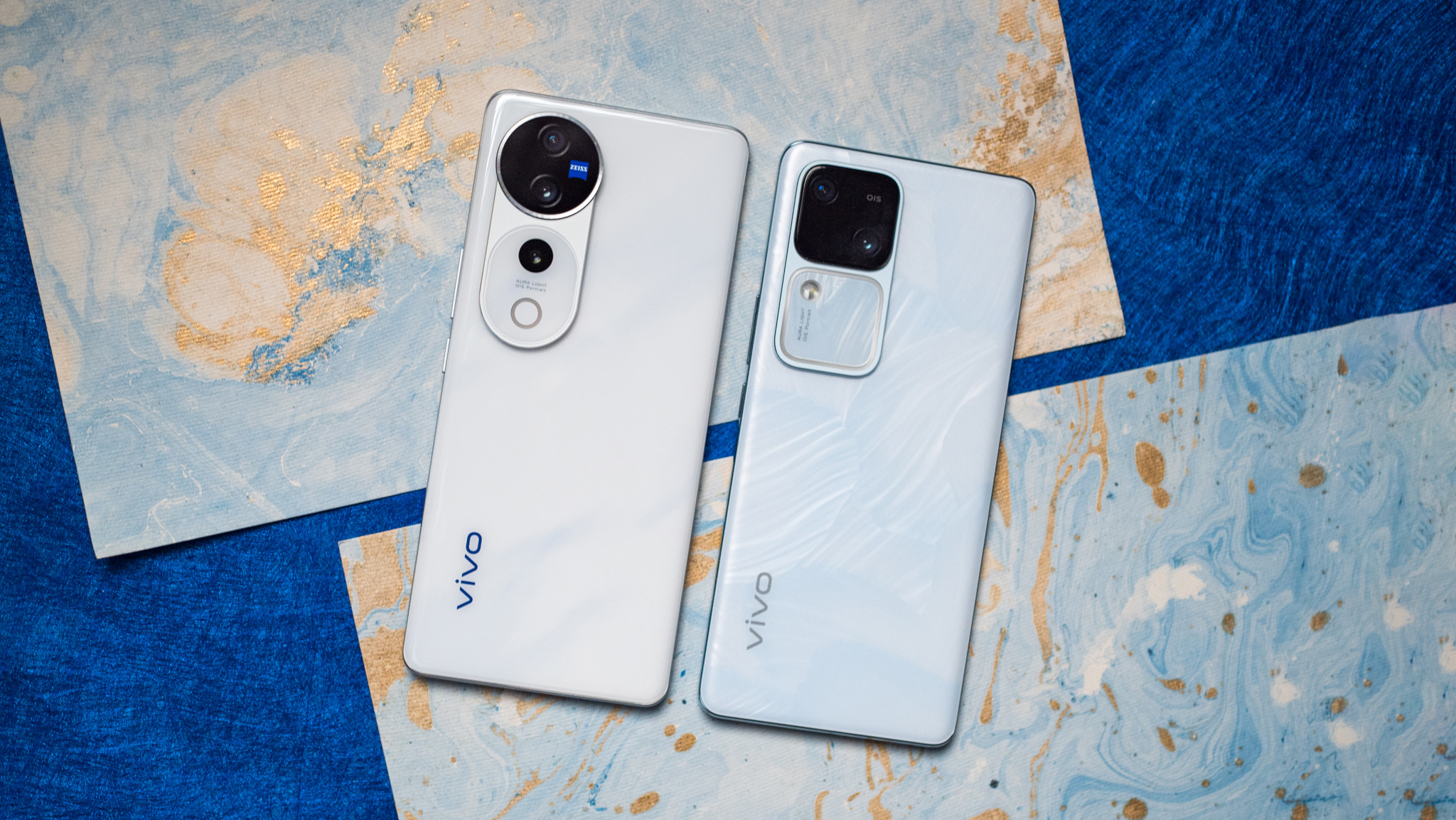
If you don't need the latest phone, the V30 Pro is still a great offering, and now that the V40 series is official, it's available for less. The V30 Pro also has terrific cameras, the design is just as elegant, and the AMOLED panel is similarly great. The battery doesn't last as long, and the phone isn't anywhere as good at gaming, but if you don't mind those omissions, it is a better value.
Talking about value, the OnePlus 12R continues to be a good choice in this category, and it combines a good design with powerful hardware and a great 50MP camera at the back and 5500mAh battery. While I like the main camera, the auxiliary lenses aren't anywhere as good, and the resultant shots aren't quite on the same level as the V40 Pro.
Vivo V40 Pro: Should you buy it?
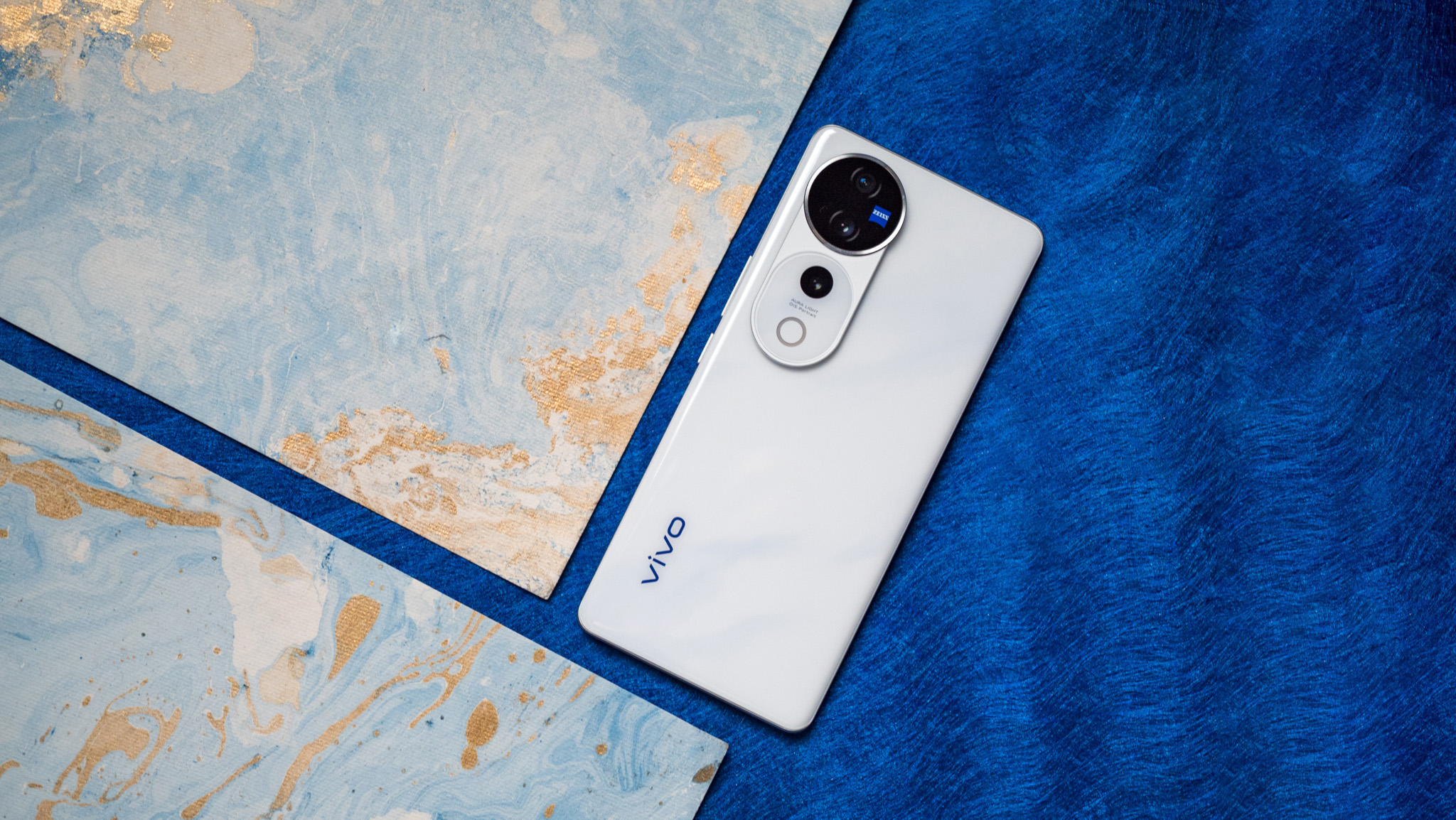
You should buy this if:
- You need a mid-range phone with terrific cameras
- You want a sleek design that doesn't miss out on the basics
- You need powerful hardware
- You want two-day battery life
You shouldn't buy this if:
- You need a good value
- You want timely software updates
While I didn't think much of the V40 Pro when it was announced, I ended up liking the device quite a bit in the two weeks I used it. The ultra-thin design is noticeably different to other phones, and Vivo deserves credit for cramming a massive 5500mAh battery into such a svelte frame.
While the camera housing is starting to look comically large, I like the overall design of the phone. The hardware is similarly enticing, and the inclusion of stereo sound and IP68 ingress protection allows the V40 Pro to stay relevant in this category. The battery lasts much longer than the V30 Pro, and I was easily able to get a day and a half even with heavy use.
Interestingly, the switch to MediaTek's Dimensity 9200+ makes the V40 Pro one of the most powerful mid-range phones around; it is significantly better than its predecessor at demanding games, and it doesn't overheat even in extended gaming sessions.
But the camera is once again the star of the show; by including four great cameras on the device, Vivo is offering the best overall camera package of any mid-range phone today. Yes, it costs a lot more than the V30 Pro, but you're also getting sizeable upgrades, and if you want a sleek phone with great cameras, the V40 Pro should be at the top of your list.
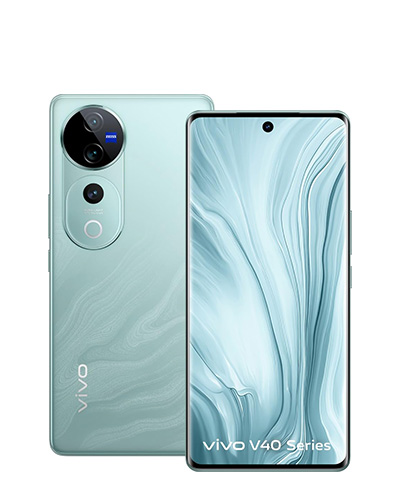
With stellar cameras and big upgrades in other areas, the V40 Pro is one of the best mid-range phones you can buy right now.

Harish Jonnalagadda is Android Central's Senior Editor overseeing mobile coverage. In his current role, he leads the site's coverage of Chinese phone brands, networking products, and AV gear. He has been testing phones for over a decade, and has extensive experience in mobile hardware and the global semiconductor industry. Contact him on Twitter at @chunkynerd.
You must confirm your public display name before commenting
Please logout and then login again, you will then be prompted to enter your display name.


